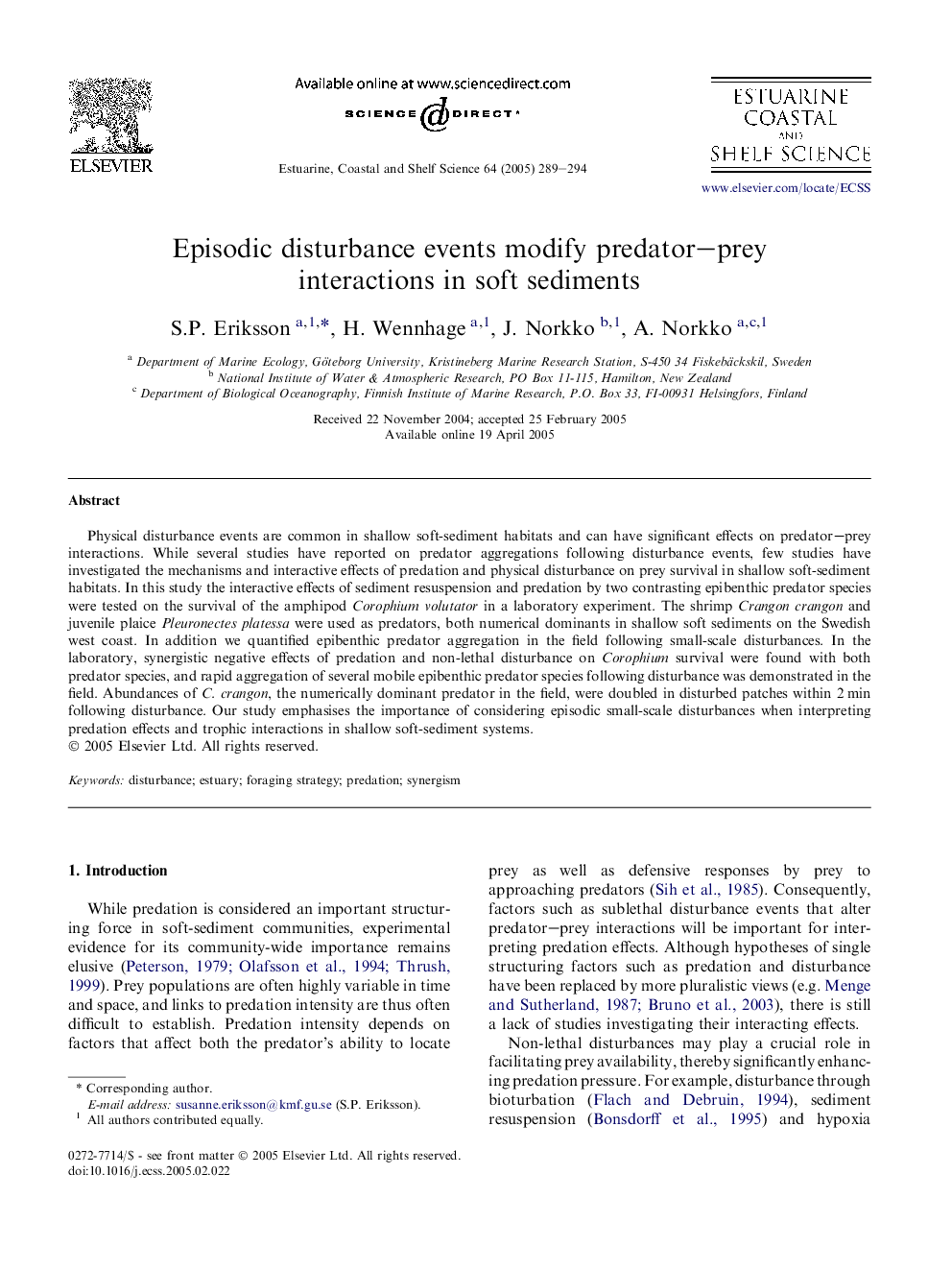| Article ID | Journal | Published Year | Pages | File Type |
|---|---|---|---|---|
| 9480576 | Estuarine, Coastal and Shelf Science | 2005 | 6 Pages |
Abstract
Physical disturbance events are common in shallow soft-sediment habitats and can have significant effects on predator-prey interactions. While several studies have reported on predator aggregations following disturbance events, few studies have investigated the mechanisms and interactive effects of predation and physical disturbance on prey survival in shallow soft-sediment habitats. In this study the interactive effects of sediment resuspension and predation by two contrasting epibenthic predator species were tested on the survival of the amphipod Corophium volutator in a laboratory experiment. The shrimp Crangon crangon and juvenile plaice Pleuronectes platessa were used as predators, both numerical dominants in shallow soft sediments on the Swedish west coast. In addition we quantified epibenthic predator aggregation in the field following small-scale disturbances. In the laboratory, synergistic negative effects of predation and non-lethal disturbance on Corophium survival were found with both predator species, and rapid aggregation of several mobile epibenthic predator species following disturbance was demonstrated in the field. Abundances of C. crangon, the numerically dominant predator in the field, were doubled in disturbed patches within 2Â min following disturbance. Our study emphasises the importance of considering episodic small-scale disturbances when interpreting predation effects and trophic interactions in shallow soft-sediment systems.
Related Topics
Physical Sciences and Engineering
Earth and Planetary Sciences
Geology
Authors
S.P. Eriksson, H. Wennhage, J. Norkko, A. Norkko,
